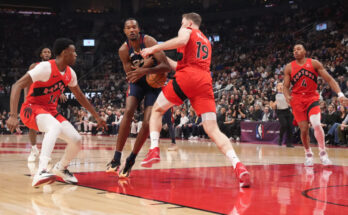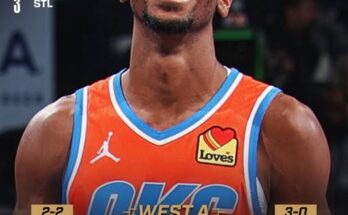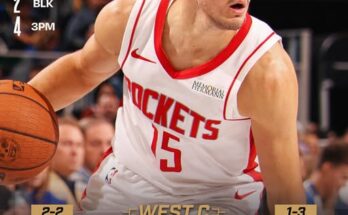Paul Skenes is no longer just a rising star—he’s now the clear frontrunner in the National League Cy Young race, and there’s little debate left among analysts, players, and fans alike. What began as a promising follow-up to his phenomenal rookie year has turned into a historic sophomore season, with the former LSU ace putting up numbers not seen in the majors for over a decade. From his dominant strikeout rates to an almost untouchable ERA, Skenes is pulling away from the pack, and with each start, he’s making the case that this isn’t just his award to lose—it’s already his to own.
Coming into the 2025 season, expectations were high. Skenes had already taken the league by storm in 2024, earning National League Rookie of the Year honors, starting the All-Star Game as a rookie, and finishing third in Cy Young voting behind more experienced arms. That alone put him in rare company. But what Skenes is doing in his second season transcends expectations and comparisons. He leads all of Major League Baseball in ERA, sitting just above 2.00, and ranks first in nearly every advanced metric that matters. Fielding Independent Pitching (FIP), strikeouts per nine innings, WHIP, and opponent batting average all point to the same thing: he is the most dominant pitcher in the National League, and arguably the entire sport.
His July was nothing short of legendary. Over 27 innings pitched, he posted a microscopic 0.67 ERA, allowing just two earned runs while striking out 37 batters. That stretch alone would be enough to turn heads, but it was more a continuation than a breakthrough. By then, Skenes had already established himself as the hardest pitcher to hit in the league, holding opponents to a batting average well below .200. That level of dominance, particularly in this era of high-powered offenses and short leashes for starters, has put Skenes in a category of his own. His strikeout totals are approaching levels rarely seen since the height of pitchers like Jacob deGrom and peak Justin Verlander. At this pace, he’s not just leading a race—he’s creating separation.
Despite all this, his win-loss record hasn’t always reflected the dominance. Through multiple starts this season, Skenes has seen his own team’s offense falter, managing just a handful of runs across numerous outings. In one recent six-game stretch, he allowed only three earned runs total and still came away with a .500 record. The Pirates’ inconsistent offense has kept him from stacking wins the way traditional Cy Young voters often expect, but that seems to be the only thing holding him back from complete statistical perfection. The modern voter, however, has increasingly leaned on advanced metrics to judge pitcher performance, which means Skenes’s lack of run support is unlikely to cost him when votes are tallied.
Still, that doesn’t mean there are no obstacles. Zack Wheeler of the Phillies remains in contention and has had a consistently excellent season of his own. He’s kept his ERA in the low twos, leads in innings pitched, and has been a steady veteran presence on a contending team. In a closer race, his team’s position in the standings might sway voters, but Skenes’s numbers have been so overpowering that even Wheeler’s great season doesn’t quite stack up. Other pitchers like Yoshinobu Yamamoto and Logan Webb have made strong cases early in the year, but neither has matched Skenes’s consistency or his jaw-dropping monthly dominance.
The betting markets have responded accordingly. At most sportsbooks, Skenes is the heavy favorite to win the NL Cy Young. His odds have shortened to the point where betting on him offers almost no return, a sure sign that oddsmakers believe the race is virtually over barring injury or complete collapse. Those types of odds don’t happen unless the gap is wide, and the sentiment is backed by national media as well. In recent polls of baseball analysts, Skenes received the vast majority of first-place votes, and many who didn’t still had him firmly in their top two.
Part of what makes this season even more impressive is the way Skenes has evolved as a pitcher. His game isn’t just about velocity, though his triple-digit fastball remains one of the nastiest pitches in baseball. He’s begun to work in a more refined cutter and a devastating splitter, giving him a full arsenal that keeps hitters guessing. Unlike some flame-throwing young pitchers who rely too heavily on their heat, Skenes pitches with intent, showing poise well beyond his age. He understands how to sequence pitches, how to attack hitters’ weaknesses, and when to overpower versus when to induce weak contact. His control has improved steadily as the year has progressed, and his walks per nine innings are down from his rookie campaign—a clear sign of development and maturity.
The Pirates, for their part, have tried to strike a delicate balance between maximizing Skenes’s impact this season and managing his long-term health. There’s been chatter about limiting his innings down the stretch, perhaps skipping a start or two or pulling him earlier in games. So far, though, Skenes has maintained a regular routine and shown no signs of fatigue. If anything, he’s getting stronger as the season wears on, and his body language on the mound reflects full confidence and command. His velocity hasn’t dipped, his control has sharpened, and his presence has grown. He’s no longer the exciting rookie sensation—he’s now the anchor of a rotation and the face of a franchise.
From a narrative standpoint, his story is one voters will love. Drafted No. 1 overall just two years ago out of LSU, where he helped lead the Tigers to a national championship, Skenes was hailed as one of the most MLB-ready arms the draft had seen in years. He arrived with huge expectations, and yet somehow, he’s managed to exceed them. He’s become must-watch television every time he takes the mound, packing stadiums both home and away. His starts feel like events, not just games. For a Pirates team that hasn’t had many bright spots over the last decade, he’s become a beacon of hope—and a player who could help turn around a long-struggling franchise.
Even his teammates speak about him with awe. Veterans on the team have praised his work ethic and calm demeanor, noting that he doesn’t act like a 23-year-old in his second season. Coaches have raved about his willingness to learn and adjust. In every way, he has embraced the responsibility of being a top pitcher in a major league rotation. There’s no arrogance in his game, just intensity and a quiet confidence that radiates from the mound. It’s that blend of physical ability, mental approach, and relentless preparation that separates him not just from other young pitchers, but from most pitchers in the game today.
As the season enters its final stretch, all eyes remain on Skenes. The only real question now is whether the Pirates choose to be cautious with his workload or allow him to pitch all the way through September. Barring a sudden shutdown, it’s hard to imagine any scenario where he doesn’t finish the season as the Cy Young winner. Even with a few fewer innings, his per-game dominance is so overwhelming that it would take an incredible surge from a rival—combined with a dramatic drop-off from Skenes—to change the outcome.
There’s always some unpredictability in baseball. Voters have surprised before, and sometimes narratives shift in the final month. But this year, the numbers, the eye test, and the storyline all align. Paul Skenes is pitching at a historic level, one that deserves recognition not just with accolades but with a place in the record books. If he continues at anything close to this pace, the Cy Young Award will be headed to Pittsburgh—and to the young arm who’s not just living up to the hype, but redefining what’s possible in a second-year pitcher.
In a season full of stars, trades, and breakout performances, Skenes has been the constant. Every fifth day, he dominates. And now, with the stretch run in full view, he’s no longer in a race—he’s pulling away.



